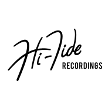Like probably just about everyone here trying to learn songs, I spent quite a bit of time looking at options to slow down songs I'm trying to learn (& retain pitch.) At least a dozen ways to skin that cat. Finally, I got curious about Garageband - figured surely there is a way to do it there, right?
Well, yes. Yes there is. Wasn't the most intuitive, but after some time looking high/low, I found enough information to figure out how to do it. Figured I'd spread the word!
Disclaimer - this is about the only thing I now know how to do in Garageband. There are probably other ways to achieve this in an even better way. There may also be variations depending on what version of OS X you have or which "year" of Garageband you have. Sorry, I'm not going to be of much help with those. Hopefully the process is similar enough that what I'll share below would still be possible.
Oh yeah, these steps assume you've already got the song in your iTunes library.
Lastly - I think it'd be useful to understand what you're doing when you take this approach; basically, you are creating a master track that isn't the song you want to learn. You're not actually playing anything from that track, but using it so that your song (an additional / 2nd track) can be forced to follow to the master track tempo. You need to create this parent/child relationship because I don't see any other way to simply adjust tempo & retain pitch of the imported song into Garageband.
So without any more yammering on like a monkey, I give you a few simple steps on how to use Garageband to slow down tempo, retaining pitch, so you can learn that killer tune you've been trying to figure out.
Step one… pick a project mode to get into the mixer. Don't think it really matters what you choose - again, it's just to set / adjust tempo- not actually play anything. I've used Piano, Guitar, and Loops all the same. Just pick one.
Step two… save your project with whatever you want to call it (this is an automated / forced step from Garageband)

Step three… add the first track. I've used Piano here, but I don't think it matters really.

Step four… click the far left of the first track, giving it a star, making it the Master Track. Remember, this is critical - you can adjust tempo & pitch on this track, but not the actual song. You will tweak the song track to force it to follow the tempo & pitch changes you make to the Master track.

Step five… way down in the bottom right corner, click the media browser icon. At this time the far right panel shows the songs you have in your iTunes library. Simply click and drag the song you want to work on and drop it at whatever measure spot you want.
Notice that when you do this, the track appears in Orange. I don't know why, but if you don't take the next step, you cannot make the song tempo (or pitch) follow the Master track.
Step six… press Control + Option + G then click on the orange song track. Prest-O Change-O! It's now encoded to allow you to make it follow the master track tempo. You'll know that's true 'cause it's now purple.

Step seven… way down in the bottom left corner is the scissor looking icon - that's the show/hide track editor button. Click that to bring up the bottom panel as shown here. You'll then need to check the box to make this track "Follow Tempo & Pitch"
Step eight… technically the last step you have to take. Back to the way bottom right, click the middle button ( letter i in a circle) - thats the show/hide Track Info button. Then click the Master Track tab way up there in the top right corner. Taaa-Daaa! You'll see the tempo slider! Adjust tempo and play away (  ). In my experience, the pitch is already retained, so nothing to monkey with there… granted you can tweak it if you really wanted to.
). In my experience, the pitch is already retained, so nothing to monkey with there… granted you can tweak it if you really wanted to.
Optional stuff that may also be useful:
In the Control pull down menu, select "Show Tempo in LCD" that gives another more visible indication of the tempo in the bottom of the Garageband window.
You can also mute the Master track… again, you've not programmed anything for it to play, so technically it's silent, but for you really anal types out there (like me!), it's there on the top left.
And lastly, not sure why anyone would, but you can mute out the Metronome click sound by clicking the icon down there next to the info window. Seems to me that's a critical part about getting the vibe right (not just the notes)… understanding where each bit sits in the count.

So there you have it. A "free" built in slowdowner app for anyone who already has a Mac with Garageband. Hope you find this as useful as I did (at least useful enough to do these screen shots and write it up!)
—Fady
El Mirage @ ReverbNation
Last edited: May 26, 2012 13:28:08












































